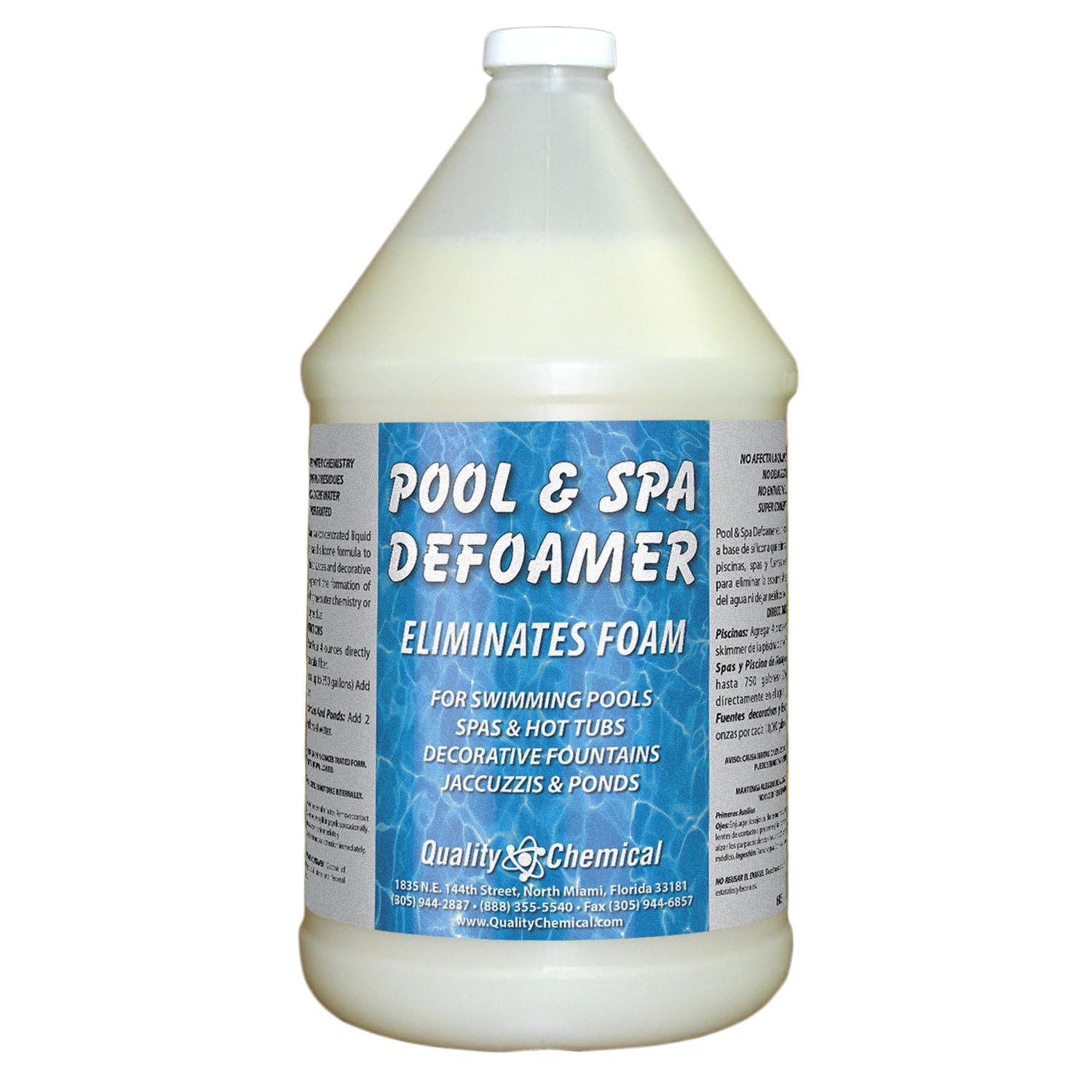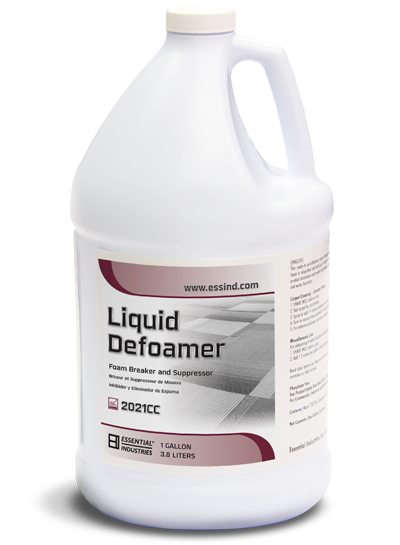Discovering the Perks of a Chemical Defoamer in Manufacturing and Production
The combination of chemical defoamers in manufacturing and manufacturing processes offers a tactical benefit by attending to one of the persistent challenges in commercial procedures: foam control. Chemical Defoamer. Understanding the nuances of numerous sorts of defoamers and their particular applications can reveal their substantial influence on functional performance and item high quality. As makers make every effort to enhance processes and improve client contentment, the function of chemical defoamers ends up being increasingly vital. The inquiry stays: just how do these substances essentially change the landscape of manufacturing efficiency and cost-effectiveness?
Significance of Foam Control
While the visibility of foam in producing procedures can occasionally appear safe, reliable foam control is crucial for optimizing operational effectiveness and product top quality. Foam can hinder different stages of manufacturing, causing inefficiencies that might boost prices and extend handling times. In markets such as food and beverage, pharmaceuticals, and chemicals, unchecked foam can obstruct tools, disrupt automated systems, and inevitably lead to product inconsistencies.

Carrying out effective foam control methods not just improves performance however likewise supports regulative conformity in sectors where foam can lead to environmental issues. By utilizing chemical defoamers, manufacturers can mitigate these challenges, making sure smoother procedures and higher-quality final result. Eventually, focusing on foam control is an essential element of manufacturing that can generate considerable benefits in regards to effectiveness, safety, and product integrity.
Kinds Of Chemical Defoamers
What types of chemical defoamers are available for producing processes, and just how do they vary in application? Chemical defoamers can be classified right into three main kinds: silicone-based, natural, and not natural defoamers. - Chemical Defoamer

Organic defoamers, typically stemmed from fatty acids or natural oils, are reliable in a series of applications, including food and drink manufacturing. They are typically liked for their lower poisoning and ecological effect, guaranteeing conformity with sector guidelines.

Each type of defoamer offers distinct functions based on the chemical make-up and the details needs of the production process, allowing makers to select one of the most suitable alternative for their certain requirements.

Advantages in Manufacturing Efficiency
Chemical defoamers play a vital role in enhancing producing effectiveness by efficiently controlling foam generation throughout various procedures. Foam can hinder production prices, interfere with devices operation, and cause pricey downtime. By incorporating chemical defoamers, makers can mitigate these concerns, guaranteeing smoother workflow and raised general efficiency.
Using chemical defoamers assists maximize the functional more performance of devices such as pumps, reactors, and mixers. With minimized foam, these devices can run at their intended capacity, decreasing the threat of overflow and enabling regular handling. This results in much better resource use and greater throughput.
In addition, chemical defoamers promote faster processing times by decreasing the time needed for foam removal. This acceleration can significantly impact production schedules, enabling suppliers to fulfill client need much more successfully. Furthermore, using defoamers adds to decrease energy usage, as equipment operates more effectively with reduced foam interference.
Impact on Product Top Quality
Foam control is not only necessary for keeping efficiency in manufacturing procedures yet also plays a significant duty in guaranteeing product quality. Extreme foam can introduce air into formulations, causing incongruities in the final item. This can manifest as problems such as gaps, uneven structures, or subpar surfaces, which weaken the intended top quality and efficiency of the product.
Additionally, foam can impede the homogeneity of mixtures, causing unequal distribution of active ingredients. In industries such as coverings, cosmetics, and food production, this can cause variations in shade, taste, and general performance. By utilizing a chemical defoamer, manufacturers can mitigate these threats, ensuring that products satisfy strict top quality specs.
Furthermore, regulating foam can improve the security of suspensions and emulsions, which is crucial for guaranteeing shelf-life and customer complete satisfaction. With boosted item uniformity and lowered problems, manufacturers can achieve higher criteria of quality control, ultimately bring about increased client depend on and brand name loyalty.
Cost-Effectiveness and ROI
Efficient foam control not only boosts item high quality but also adds substantially to the general cost-effectiveness of making processes. Making use of chemical defoamers decreases foam-related issues, which can otherwise result in production delays, devices breakdowns, and raised energy intake. By reducing foam, manufacturers can maximize their procedures, causing higher throughput and efficiency.
Investing in chemical defoamers can generate a considerable return on financial investment (ROI) The first prices related to these additives are typically balanced out by the financial savings recognized from reduced downtime and enhanced material yield. Enhanced product quality can reduce waste and revamp costs, better boosting monetary efficiency.
Additionally, effective foam control can cause reduced water and energy use, contributing to reduced operational expenses. This is specifically essential in industries where resource effectiveness is vital. By integrating chemical defoamers right into their processes, suppliers can attain lasting savings while keeping competitive prices in the marketplace.
Verdict
Finally, the assimilation of chemical defoamers in manufacturing and manufacturing procedures is necessary article for optimizing operational efficiency and improving product quality. Effective foam control adds to improved devices performance, lowered processing times, and reduced downtime, eventually causing significant price savings. In addition, regular product solutions foster client complete satisfaction and brand commitment. The advantages provided by chemical defoamers not only support governing conformity yet also provide an one-upmanship in the manufacturing landscape.
The combination of chemical defoamers in manufacturing and manufacturing processes uses a tactical advantage by attending to one of the consistent challenges in commercial operations: foam control.While the existence of foam in manufacturing procedures can occasionally appear harmless, effective foam control is essential for optimizing functional effectiveness and item high quality.Chemical defoamers play a critical function in improving producing efficiency by successfully managing foam generation during different procedures.Furthermore, chemical defoamers help with faster processing times by decreasing the time useful site needed for foam elimination. Additionally, the usage of defoamers contributes to lower energy consumption, as equipment operates much more efficiently with minimized foam interference.